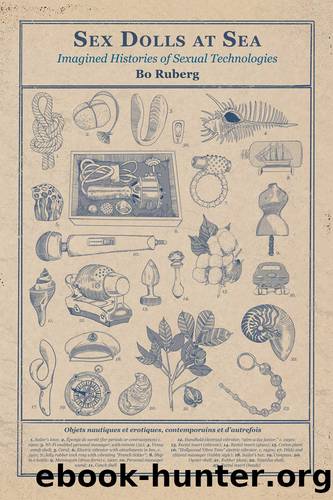Sex Dolls at Sea by Bo Ruberg

Author:Bo Ruberg [Ruberg, Bo]
Language: eng
Format: epub
Publisher: MIT Press
Making Sexual Technologies Masculine
In her 1999 book Making Technology Masculine, Ruth Oldenziel describes what she refers to as âmenâs love affair with technologyââa kind of âmale technophiliaâ that manifests as a âpassionate romanceâ that men conduct with computers.3 Even when the passion that men have for machines comes under scrutiny from the wider public, writes Oldenziel, its logics remain unquestioned: as if straight, cisgender menâs attraction to technology was itself âa matter of fact that needs no explanation.â4 Yet as Oldenziel explains, this notion of menâs romance with machines has its own history. According to Oldenziel, that history starts in the final decades of the 1800s and runs up to the present day, emerging alongside shifting perceptions of gender roles and attempting to shore up a precarious, white, middle-class masculinity through narratives about the natural affinity between men and machines.5 Mar Hicks, writing in their book Programmed Inequality: How Britain Discarded Women Technologists and Lost Its Edge in Computing, extends this explication of computer history, explaining how women were actively pushed out of the computer labor force (previously seen as womenâs work) in Britain in the 1950s and 1960s.6 By the mid-twentieth century, women who worked in computational fields were being recast as low-skill workers, and less qualified men were being brought in to fill their jobs. This shift in cultural attitudes can be seen as its own kind of origin story, feeding into the erasure of women from other adjacent areas of computer history, such as the history of video game development, and ultimately seeding the male-dominated âtoxic technoculturesâ that thrive online today.7 In large part, these toxic technocultures are themselves founded on the presumption that digital spaces should be preserved as a realm for the unchecked expression of menâs heterosexual desires.
All of which is to say that though technology has long been associated with men, that association is by no means ânaturalâ or given. For at least the last 150 years, making it seem like technology is a masculine domain has required active cultural work. The feminist scholarship on computer history mentioned earlier is particularly valuable for making visible the erotics of coding technology as masculine. Part of the process of legitimizing menâs claim to technological prowess has been the cultivation of a narrative about how men desire machines, both intellectually and sexually. This imagined âpassionate romance,â as Oldenziel terms it, has cropped up in popular culture for decades, since the introduction of technologies like the personal computer and the consumer internet. It appears in everything from how-to guides warning about the phenomenon of âcomputer widows,â whose male romantic partners stay up all night rather than coming to bed, to Sherry Turkleâs description in 1984 of young men who prefer computers to human girlfriends.8 Scholars like Julie Wosk have demonstrated that the notion of menâs attraction to machines, as it appears in art and fiction, also has a much longer history that continues to influence the presentâemerging in works like E. T. A. Hoffmanâs âThe Sandmanâ in 1816
Download
This site does not store any files on its server. We only index and link to content provided by other sites. Please contact the content providers to delete copyright contents if any and email us, we'll remove relevant links or contents immediately.
Cecilia; Or, Memoirs of an Heiress — Volume 1 by Fanny Burney(32375)
Cecilia; Or, Memoirs of an Heiress — Volume 3 by Fanny Burney(31750)
Cecilia; Or, Memoirs of an Heiress — Volume 2 by Fanny Burney(31715)
The Great Music City by Andrea Baker(31087)
We're Going to Need More Wine by Gabrielle Union(18906)
All the Missing Girls by Megan Miranda(15392)
Pimp by Iceberg Slim(14213)
Bombshells: Glamour Girls of a Lifetime by Sullivan Steve(13928)
Talking to Strangers by Malcolm Gladwell(13134)
Norse Mythology by Gaiman Neil(13126)
Fifty Shades Freed by E L James(13121)
For the Love of Europe by Rick Steves(12345)
Crazy Rich Asians by Kevin Kwan(9124)
Mindhunter: Inside the FBI's Elite Serial Crime Unit by John E. Douglas & Mark Olshaker(9104)
The Lost Art of Listening by Michael P. Nichols(7360)
Enlightenment Now: The Case for Reason, Science, Humanism, and Progress by Steven Pinker(7084)
The Four Agreements by Don Miguel Ruiz(6542)
Bad Blood by John Carreyrou(6477)
Weapons of Math Destruction by Cathy O'Neil(6085)
